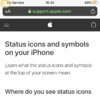It is really rushed. If you look at the press, 2019/2020 was supposed to be the early release, but there was a rush in the latter half of 2018 to put out some 5G. Verizon created a proprietary technology that they had hoped would be adopted by the industry, but in the 2015/16 period no one, not even the companies that worked with them on it, wanted it for what is now called 5G. FWIW the inside industry term is NR for New Radio. When the basic of NR were discussed the numerologies that were associated with the Verizon idea (75kHz Sub-carrier spacing especially) did not lend itself to the adaptability that was needed to meet the three main use cases: ehanced Mobile Broadband (eMBB), massive Machine Type Communication (eMTC), and Ultra-Reliable Low Latency Communication (URLCC). The best SCS was 2^n*15kHz which would give SCSs of 15khz, 30kHz, 60kHz, etc. and make mixed numerology carriers in the same frequency band much easier to deal with plus where NR had to coexist with LTE much easier as LTE uses a SCS of 15kHz. Making Dynamic Spectrum Sharing possible and this would be a big game-changer for rolling out the NR carriers into band where LTE was already deployed.
It is coming though. Watch for the end of this year and next year to really see a lot. The first handheld devices just came out a few months ago. BTW AT&T still is not selling a 5G phone even though they say they have some 5G deployed. LOL!



